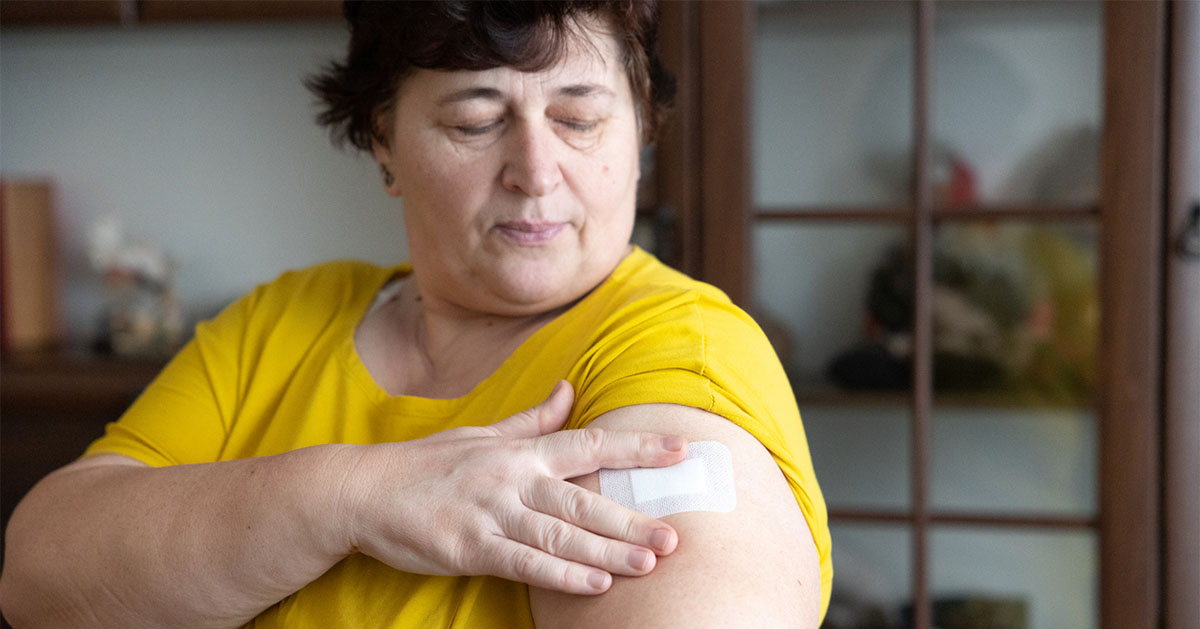When people with diabetes resident in the UK start insulin therapy, they are required by law to inform both their vehicle insurance company and the UK Driver and Vehicle Licensing Agency (DVLA), who will then issue them with a DIAB1 form for completion. In most cases, a restricted licence will then be issued, which will require renewing every 3 years (or less if there are specific concerns about the person’s fitness to drive over a longer period).
Hypoglycaemia is an intermittent complication of insulin-treated diabetes that affects cognitive function (Bodansky and Bodansky, 2009). Early symptoms of hypoglycaemia include sweating, shakiness, hunger, palpitations, anxiety and tingling lips. If ignored, symptoms may progress to slurred speech, difficulty concentrating, confusion, and irrational behaviour (which may be mistaken for drunkenness), impairing the skills required to drive safely (DVLA, 2012).
Prior to September 2010, if people with diabetes experienced recurrent hypoglycaemic episodes, they would have been required to stop driving for a minimum of 3 months to allow time to stabilise their blood glucose levels. People with unawareness of hypoglycaemia would only be granted a licence if they had not experienced severe hypoglycaemia and regularly tested their blood glucose (Gold, 2012). The DVLA (2012) states that the person with diabetes:
- Must not have had more than one episode of severe hypoglycaemia requiring the assistance of another person within the preceding 12 months.
- Must not have impaired awareness of hypoglycaemia, which has been defined by the diabetes panel for Group 1 vehicles as “an inability to detect the onset of hypoglycaemia because of a total absence of warning symptoms”.
- Must be performing appropriate blood glucose monitoring.
Patients who have some impaired hypoglycaemic awareness may continue to drive under medical conditions and should perform blood glucose testing regularly (Gold, 2012).
With regard to Group 2 licences (categories C and D – medium and large lorries and buses), people with insulin-treated diabetes can now apply for a licence in this category, whereas previously such individuals were only permitted to hold a C1 licence. Completion of a D2 form is required to apply for a Group 2 licence. It should be noted that applicants with insulin-treated diabetes are required to use a blood glucose monitor with a memory function to measure and record blood glucose levels for at least 3 months prior to submitting their application. A Group 2 licence will only ever be issued assuming strict medical conditions can be met (DVLA, 2012). The person with diabetes is required to:
- Have had no episodes of hypoglycaemia requiring the assistance of another person (in the previous 12 months).
- Maintain full awareness of hypoglycaemia.
- Regularly monitor their blood glucose at least twice a day, and at times relevant to driving, using a monitor with a memory function to record blood glucose levels.
- Provide blood glucose readings for the preceding 3 months in the memory of a blood glucose monitor, made available to be examined by an independent consultant diabetologist at an annual examination.
- Demonstrate an understanding of the risks of hypoglycaemia in relation to driving. (DVLA, 2012)
Methods
An anonymous nine-point questionnaire (Figure 1) was completed over a 12-month period by 298 people with either type 1 or insulin-treated type 2 diabetes attending their routine diabetes clinic appointment at a community hospital offering a diabetes outreach service to 1700 people with the condition. The questionnaire was completed in clinic prior to the consultation with the medical staff or diabetes specialist nurse. Nobody refused to complete the questionnaire when asked.
This audit enabled us to obtain data on people’s knowledge of driving regulations in relation to hypoglycaemia and also the measures they would take to avoid and/or treat hypoglycaemia when driving. We were also provided with the opportunity to update the people on the new, updated driving regulations.
After completing the questionnaire, the person with diabetes had their review appointment with the doctor and/or diabetes specialist nurse, giving an ideal opportunity to provide education regarding hypoglycaemia and driving. During the consultation, their answers to the questionnaire were discussed, the revised driving regulations in relation to hypoglycaemia were reviewed, and an abbreviated set of guidelines clearly highlighting the key points was provided. It was clearly documented in the case notes that this information and written guidelines had been provided.
Results
Our audit indicated that only 28% (83) of people completing the survey regularly tested their blood glucose before driving, with 18% (54) admitting to never testing and 54% (161) testing occasionally (Figure 2a). Fifty-one per cent (151) stated that they did not routinely carry means for blood glucose testing in their vehicle.
Regarding hypoglycaemia, 80% (237) denied ever feeling hypoglycaemic whilst driving; however, 93% (277) knew to pull over as soon as it was safe to do so if they felt their blood glucose was dropping. Seventy-one per cent (212) knew to remove the keys from the ignition; however, 57% (170) would not have moved into the passenger seat to treat their hypoglycaemia, ensuring they could not be considered to be in control of the vehicle. Ninety per cent (268) stated that they carry fast-acting carbohydrate in their vehicle (Figure 2b).
After hypoglycaemia, 42% (125) would have waited between 10 and 30 minutes before driving off again, whereas 36% (107) stated they would have driven off as soon as they felt better, irrespective of time. Similar to data reported by Graveling et al (2004), only 16% (48) would wait between 30 and 60 minutes before resuming driving. Six per cent (18) of those surveyed indicated that they would drive again less than 10 minutes after experiencing hypoglycaemia (Figure 2c).
Discussion
Our audit clearly demonstrates significant deficiencies of knowledge in the majority of our insulin-treated people with diabetes, with regard to driving regulations in relation to hypoglycaemia. We were initially surprised at these results, as issues in relation to driving, and specifically hypoglycaemia, are discussed in some detail as part of our standard education package provided when an individual is commenced on insulin therapy.
Our findings were similar to other studies assessing knowledge of driving regulations. Watson et al (2007) found that only 15% of people audited always tested their blood glucose prior to driving whilst 24% never tested. Similarly, only 17% would wait 45 minutes before driving after a hypoglycaemic episode. Graveling et al (2004) found very similar results, suggesting a definite lack of knowledge in relation to hypoglycaemia and driving.
Globally, driving collisions account for 1.2 million fatalities annually (Cox et al, 2010). Cox et al (2010) found that vehicular collisions are more common in people with diabetes compared with those without diabetes. However, this has not been a universal finding (Lonnen et al, 2008).
Stork et al (2006) stated that driving ability in people with insulin-treated diabetes can be affected by three factors, namely the presence of complications of diabetes, hyperglycaemia and hypoglycaemia. Hypoglycaemia is known to significantly affect cognitive motor functioning in general, and particularly cognitive motor skills required for driving a motor vehicle, as shown through driving simulation studies by Cox et al in 2000.
The Diabetes Control and Complications Trial Research Group (1997) found that exposure to frequent hypoglycaemia increases the risk of severe hypoglycaemia, and subsequent studies by Cox et al in 2006 and 2010 came up with similar findings, noting that people with diabetes who had a history of at least two episodes of severe hypoglycaemia in the previous year were at a greater risk of further episodes of hypoglycaemia.
As part of our education of people starting insulin therapy, we recommend blood glucose testing prior to driving to reduce the risk of hypoglycaemia occurring whilst driving. It is our recommendation that a snack be taken if the blood glucose is lower than 6 mmol/L, although others would suggest a figure of 5 mmol/L (DVLA, 2012). For people with impaired hypoglycaemic awareness, Gallen et al (2012), on behalf of the Association of British Clinical Diabetologists (ABCD), has recommended that such individuals should not drive without taking a carbohydrate snack if their blood glucose is lower than 7 mmol/L, although they suggest that a blood glucose higher than 5 mmol/L is safe for a short drive of less than 10 minutes.
The DVLA advises drivers with insulin-treated diabetes as follows (DVLA, 2012):
- You must always carry your glucose meter and blood glucose strips with you. You must check your blood glucose before the first journey and every 2 hours whilst you are driving.
- In each case if your blood glucose is 5.0 mmol/L or less, take a snack. If blood glucose is less than 4.0 mmol/L or you feel hypoglycaemic, do not drive.
- If hypoglycaemia develops while driving, stop the vehicle as soon as possible.
- You must switch off the engine, remove the keys from the ignition and move from the driver’s seat.
- You must not start driving until 45 minutes after blood glucose has returned to normal. It takes up to 45 minutes for the brain to recover fully.
- Always keep an emergency supply of fast-acting carbohydrate such as glucose tablets or sweets within easy reach in the vehicle.
- You should carry personal identification to show that you have diabetes in case of injury in a road traffic accident.
- Particular care should be taken during changes of insulin regimens, changes of lifestyle, exercise, travel and pregnancy.
- You must take regular meals, snacks and rest periods on long journeys. Always avoid alcohol.
Our audit clearly indicates the need for regular educational updates for people with diabetes on insulin therapy, which probably also applies to other areas of diabetes management. Reminding people with diabetes of driving regulations should be addressed on an ongoing basis, for example at diabetes review appointments, with opportunistic visits to see the diabetes specialist nurse providing an additional chance to discuss such issues.
Our audit captured people with type 1 and insulin-treated type 2 diabetes attending over a 1-year period for a routine hospital diabetes clinic review. We plan to re-audit these individuals over a further 12-month period to enable us to re-assess their knowledge following the additional education provided.
Acknowledgements
The authors give special thanks to the nursing staff at the outpatient department and Linda Scott, Medical Secretary, Roodlands Hospital, Haddington, for their invaluable help with this project.





It is crucial that we review retinal screening reports prior to prescribing GLP-1 or GIP/GLP-1 receptor agonists.
6 Aug 2025